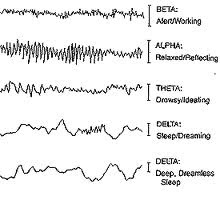Alan
Turing was born on June 23, 1912 so it would have been his 100th
birthday yesterday and many are paying homage to him as a remarkable genius
who is often referred to as the ‘Father’ of the computer age.
There are many sites that tell the story of Turing’s life but if you click on my favorite site written by Sinclair McKay you will get a true sense on the eccentric man he truly was. For instance McKay wrote “The popular image of Turing is that of a borderline Asperger’s boffin mathematician, trousers held up with an old tie, wearing a gas mask when cycling in the country, spectacularly awkward in social situations, with a high-pitched laugh that would grate the nerves of a saint. But the real genius of his story – the element from which we can draw inspiration today – is the fact that he refused to allow himself to be compartmentalised in any way, professionally or personally. This extraordinary mind roamed anywhere that took its interest.”
There are many sites that tell the story of Turing’s life but if you click on my favorite site written by Sinclair McKay you will get a true sense on the eccentric man he truly was. For instance McKay wrote “The popular image of Turing is that of a borderline Asperger’s boffin mathematician, trousers held up with an old tie, wearing a gas mask when cycling in the country, spectacularly awkward in social situations, with a high-pitched laugh that would grate the nerves of a saint. But the real genius of his story – the element from which we can draw inspiration today – is the fact that he refused to allow himself to be compartmentalised in any way, professionally or personally. This extraordinary mind roamed anywhere that took its interest.”
One
of Turing’s significant accomplishments was the breaking of the ENIGMA code that the Germans used in the 2nd
World War to transmit secret orders. Though the code was thought to be
unbreakable, Turing succeeded and thus saved probably millions of lives by
winning the war much more quickly.
The
British Science Museum has created an exhibition in Turing's honour and one of its
central features is the origingal pilot model Automatic Computing Engine [ACE]
the first machine that has most of the features of a modern computer. Turing wrote the specifications for it in
late 1945 and it included detailed logical circuit diagrams. He felt that speed
and size of memory were crucial and he proposed a high-speed memory of about 1
kilobyte accessed at a speed of 1 MHz.
The ACE also used Abbreviated Computer Instructions, an early form of
programming language. The museum's website contains a short video on Turing's life and tour of some of the exhibits.
Alan Turing
was convicted because of his homosexuality and tragically committed suicide at
the age of 41. He had so much more to contribute and his loss can never be replaced. However, though he may have been considered by most a nerd or oddball, in a time of extreme danger for Britain, he was sought out and his genius appreciated. Hopefully in this time of grave danger for our planet, we may be blessed with and treasure any with brilliant freethinking minds that can solve our ecological problems and also the charismatic leaders to enforce the measures needed to save the lives and lifestyles as we know them, of future generations. Rie








